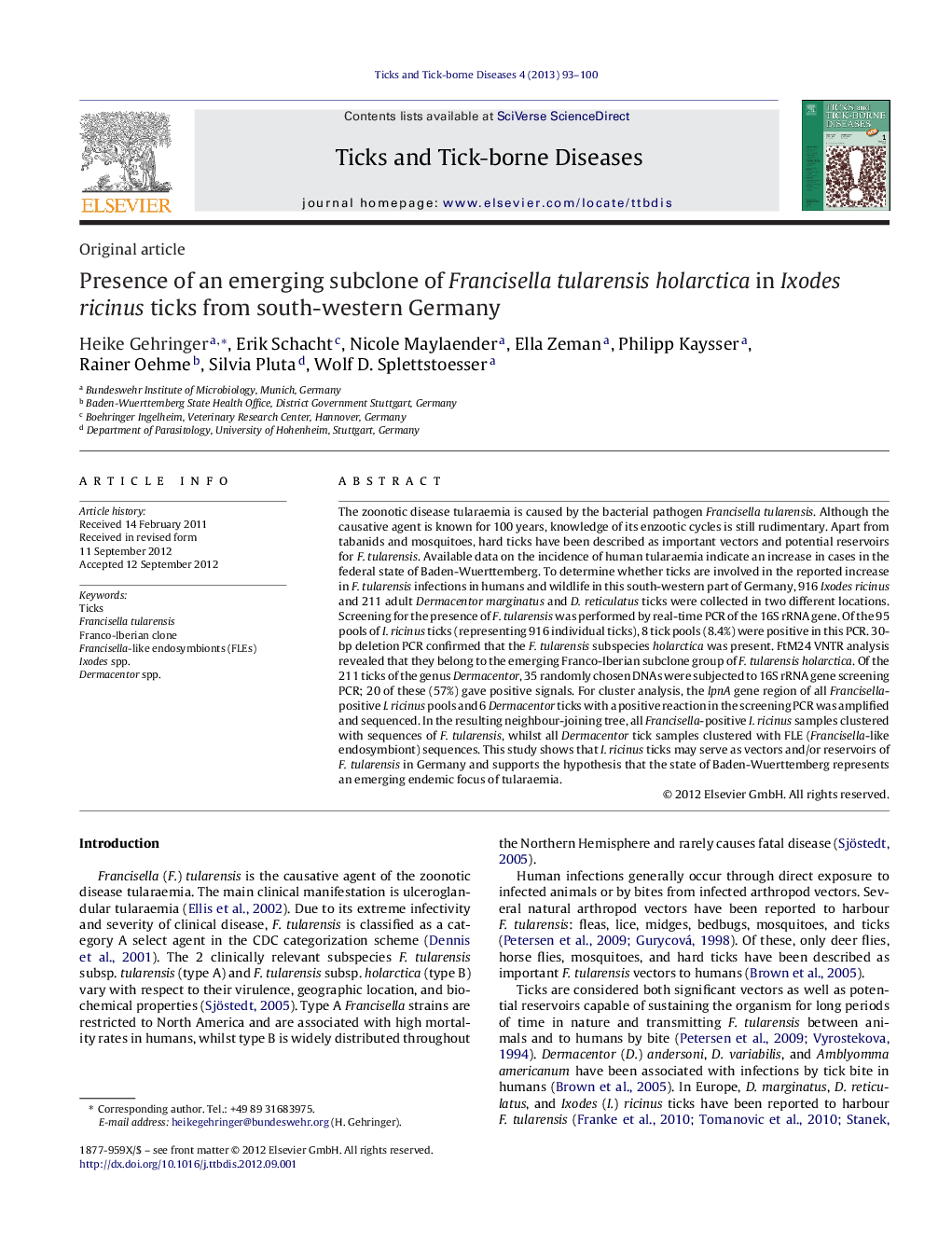| Article ID | Journal | Published Year | Pages | File Type |
|---|---|---|---|---|
| 2474236 | Ticks and Tick-borne Diseases | 2013 | 8 Pages |
The zoonotic disease tularaemia is caused by the bacterial pathogen Francisella tularensis. Although the causative agent is known for 100 years, knowledge of its enzootic cycles is still rudimentary. Apart from tabanids and mosquitoes, hard ticks have been described as important vectors and potential reservoirs for F. tularensis. Available data on the incidence of human tularaemia indicate an increase in cases in the federal state of Baden-Wuerttemberg. To determine whether ticks are involved in the reported increase in F. tularensis infections in humans and wildlife in this south-western part of Germany, 916 Ixodes ricinus and 211 adult Dermacentor marginatus and D. reticulatus ticks were collected in two different locations. Screening for the presence of F. tularensis was performed by real-time PCR of the 16S rRNA gene. Of the 95 pools of I. ricinus ticks (representing 916 individual ticks), 8 tick pools (8.4%) were positive in this PCR. 30-bp deletion PCR confirmed that the F. tularensis subspecies holarctica was present. FtM24 VNTR analysis revealed that they belong to the emerging Franco-Iberian subclone group of F. tularensis holarctica. Of the 211 ticks of the genus Dermacentor, 35 randomly chosen DNAs were subjected to 16S rRNA gene screening PCR; 20 of these (57%) gave positive signals. For cluster analysis, the lpnA gene region of all Francisella-positive I. ricinus pools and 6 Dermacentor ticks with a positive reaction in the screening PCR was amplified and sequenced. In the resulting neighbour-joining tree, all Francisella-positive I. ricinus samples clustered with sequences of F. tularensis, whilst all Dermacentor tick samples clustered with FLE (Francisella-like endosymbiont) sequences. This study shows that I. ricinus ticks may serve as vectors and/or reservoirs of F. tularensis in Germany and supports the hypothesis that the state of Baden-Wuerttemberg represents an emerging endemic focus of tularaemia.
